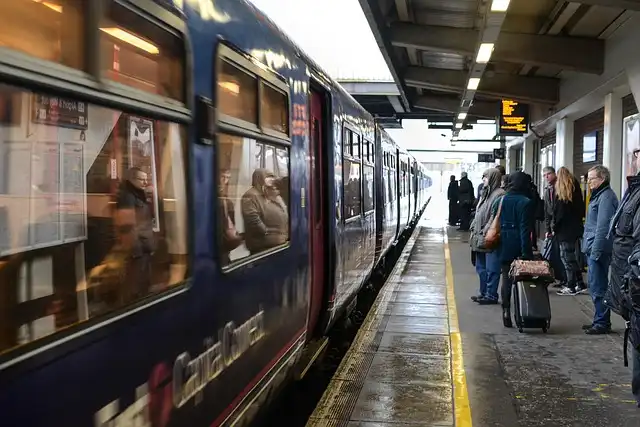Train Wi-Fi Connectivity: Challenges and Solutions

Train Wi-Fi faces challenges due to speed, tower density, and cabin design. Solutions involve telecom upgrades, signal boosting, and addressing the Doppler effect for better connectivity. Starlink and 5G are explored.
Switzerland leads the way by far, with onboard Wi-Fi speeds virtually 30 times faster than in Austria and the Netherlands. It was the only nation in Ookla’ssample to break the 25 megabits per second average download rate mark– the minimum standard for dependable web use.
Switzerland’s Superior Train Wi-Fi
Czech Railways is try out Elon Musk’s Starlink network, while France’s SNCF is reportedly eyeing both the united state constellation and its Franco-British rival, Eutelsat. SNCF really did not reply to POLITICO’s request for comment.
Rather, SNCB chose to get out of to telecom companies while it bought “de-coating” glazing that is more for mobile signals. “Telecom drivers, for that reason, need to boost signal top quality and insurance coverage at train infrastructure,” Guillaume said.
“If a train is going at 200km an hour, the device could be going across a cell site every 45 or 60 seconds, which is a fast turn over,” Kehoe stated. “What that presents is a technological challenge called the Doppler result.”
Challenges of High-Speed Train Wi-Fi
Poor train Wi-Fi isn’t just regarding speed or tower count. Numerous cabins aren’t in fact created to allow superhigh frequency in. “A lot of trains would have historically made use of windows that have actually metalized or [low-emissivity] glass coverings that are naturally not for signify breeding,” Kehoe said.
On French SNCF trains, tourists logging onto the Wi-Fi obtain a pop-up caution: “As a result of the lack of coverage and our speed, the quality of the Wi-Fi might vary from that in your home.” It also discourages watching on-line video clips, which “adds to restricting the transmission capacity.”
Cabin Design and Signal Penetration
Poor train Wi-Fi isn’t just regarding pace or tower count. Several cabins aren’t actually made to let radio regularities in.
The broadband of a train and density of towers make it naturally hard for Wi-Fi antennas in a carriage– or your smart device– to keep a consistent link between changing mobile towers.|Stefano Guidi/Getty Images
And if you’re considering simply utilizing your phone’s hotspot to get around a flaky Wi-Fi link– reconsider. “If everybody is transmitting their very own Wi-Fi networks, there is a substantial disturbance challenge here,” Kehoe alerted.
The high rate of a train and density of towers make it predictably challenging for Wi-Fi antennas in a carriage– or your smartphone– to maintain a steady connection in between transforming mobile towers. Stefano Guidi/Getty Images
The physics of superhigh frequency are additionally well established: The band typically allocated for 5G in Europe isn’t excellent at puncturing trees and leaves, which usually line train tracks. It makes it much more challenging to reach cabins or phone customers straight, on the other hand with 4G, where the lower-band regularities typically used can not carry as much data, however travel more and manage obstacles better.
Frequency and Environmental Obstacles
That setup would certainly make the cabin similar to a kind of Faraday cage– an electro-magnetic shield that blocks cordless signals, much like what causes your phone to go down contact a lift or keeps microwave radiation from leaving.
Connections tasted by Ookla in Poland– which places near the bottom for performance– revealed trains still running on Wi-Fi 4, a 2009 criterion that provides much less transmission capacity and much slower speeds than newer generations.
1 connectivity issues2 Doppler effect
3 mobile networks
4 signal quality
5 Starlink
6 train Wi-Fi
« Senate Passes Bills: Whistleblower Protection & CBP RetirementFBI Whistleblower Protection: New Legislation for Security Clearances »
